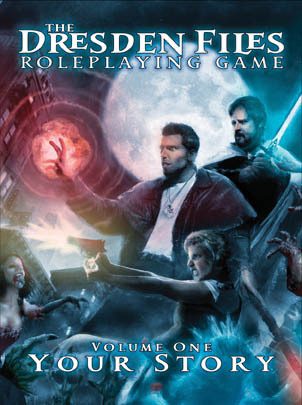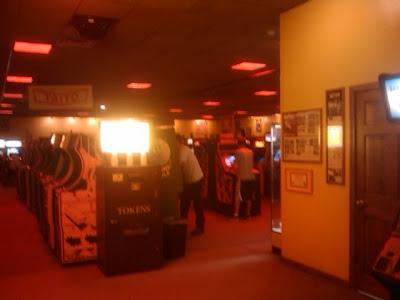 When I go to my follow-up with my urologist, he's going to give me a list of foods to avoid or increase in my diet. And it's right that he should. I came to him asking how to reduce the likelihood of more kidney stones, and if that's the answer, that's what he should say. But there's going to be an annoying, almost disingenuous, tone with the recommendations and advice that one gets from all sides, which drives me crazy.
When I go to my follow-up with my urologist, he's going to give me a list of foods to avoid or increase in my diet. And it's right that he should. I came to him asking how to reduce the likelihood of more kidney stones, and if that's the answer, that's what he should say. But there's going to be an annoying, almost disingenuous, tone with the recommendations and advice that one gets from all sides, which drives me crazy.Everywhere you turn, someone is suggesting something you should be doing, or not doing, on the basis that it only will take a few minutes, or cost a few pennies, or something. Every one of these recommendations makes sense in isolation, and everyone pretends it really is that simple. But when you put it together... well, just consider all the things that I ought to be doing every time I choose a food item to buy. And this is only a small part of the full lists, if I had time to compile them; I bet you can think of items I'm missing from each list.
Is it good for my nutritional and health needs?
- Will it give me enough protein for my gastric bypass malabsorption?
- What about my lactose intolerance?
- How might it affect my predisposition to reflux?
- Does it contain the wrong things for kidney stone formation?
- What about saturated fats, cholesterol, caloric intake, tannins, antioxidants, vitamin levels, sodium content, roughage, and so on, and so on, and so on?
- Is there currently an E. coli scare around it? How about any other contaminants or diseases?
- Is anyone blaming it for the "obesity epidemic" and if so are they just scapegoating or is there something to it?
- Is the portion size reasonable, considering the changes in portion sizes over the years?
- Is it made with overprocessed or overused ingredients, and if so, what's bad about that?
- Is it being sustainably harvested?
- Can I buy it produced locally?
- If it's an animal product, is it being produced humanely?
- Are toxic pesticides being used?
- If genetic engineering is involved, is it being handled responsibly?
- Is production and distribution causing pollution or contamination?
- Is farming of this product causing problems with genetic diversity?
- Is production based on exploiting workers?
- Is the store selling it currently supporting gay rights and other social issues?
- Are immigrants or overseas workers being treated unfairly?
- Are the businesses involved driving other businesses out of business?
- Am I supporting the economy by buying this?
- If it's imported, am I supporting repressive regimes or terrorist organizations by funneling my money there?
- Am I exposing myself to international cultures enough, rather than being a stereotypically myopic American?
- Am I paying sufficient homage to my own heritage while also exploring others?
- If life is something to be enjoyed and celebrated, or else what's the point, am I celebrating it enough, rather than nickel-and-diming my own reasons to live to death?
- Every penny I spend on this, I'm not spending on charitable giving, or saving for my retirement, or reducing my debt load, spending more on socially and environmentally responsible products in other categories, or leisure and luxury items that help me avoid becoming stressed to death. Would a cheaper version be just as good?
- But is a cheaper version just padded with fillers that won't satisfy my hunger or nutritional needs?
- Am I doing more to support my local and national economy by buying this product than another?
- If this is a prepared food, should I be buying raw ingredients and making my own foods instead? It only takes a few more minutes.
- Brushing my teeth well only takes a few more minutes.
- Staying informed about world events only takes a few minutes.
- Stopping to smell the flowers only takes a few minutes.
- Keeping my car's tires at the proper inflation, and thus reducing pollution, dependence on foreign oil, damage to the road infrastructure, etc., only takes a few more minutes.
- Having some "quiet time" to keep stress levels down only takes a few minutes.
- Recycling only takes a few minutes.
- Putting on a helmet only takes a few minutes.
- Being kind and smiling at people to make their days brighter only takes a few minutes.
- Being a 'go-getter' at work for the good of your career only takes a few minutes.
- Ensuring my smoke alarms work only takes a few minutes.
- Taking the more scenic route only takes a few more minutes.
- Planting flowers, so someone else can stop and smell them, only takes a few minutes.
- Getting enough exercise only takes a few minutes.
- Keeping close with the people in my life only takes a few minutes.
- Driving at a safe speed only takes a few more minutes.
- Giving someone a hug only takes a few minutes.
- Making up your own mind about the issues of the day only takes a few minutes.
- Keeping the kitchen clean so the mess doesn't build up only takes a few minutes.
- Taking the time to listen to other people only takes a few minutes.
- Voting only takes a few minutes.
- Becoming exposed to art and culture only takes a few minutes.
- Being wary of cons and trickery only takes a few minutes.
- Getting out into the outdoors now and then only takes a few minutes.
- Staying in touch with distant relations only takes a few minutes.
- Learning something new every day only takes a few minutes.
- Making sure your exercise includes enough of different kinds of activity only takes a few more minutes.
- Being sure you're treating everyone fairly only takes a few minutes.
- Keeping an eye out for suspicious and possibly illegal activities, and informing the authorities if you see anything, only takes a few minutes.
- Carpooling only takes a few more minutes.
- Taking the time to do whatever you're doing the right way instead of the cheap and quick way only takes a few more minutes.
- Spending some time on the things you enjoy, so that you feel it's worth it to get out of bed in the morning and you don't end up looking back on your life wondering why you bothered, only takes a few minutes. Maybe a little more.
In the end, if you tried to do everything that individually you really ought to do, you'd spend 36 out of every 24 hours, and $1.50 out of every $1 you earn, on obligatory things, not even accounting for working, eating, and sleeping, and there'd be no room left in your life for anything that's fun or joyful or that makes it worth doing any of it. But every single one of those things is justified in isolation; every one of them is worth the tiny amount of time and money it costs.



























 RealTime and RTC
RealTime and RTC Prism
Prism Uncreated
Uncreated Bloodweavers
Bloodweavers Foulspawner's Legacy
Foulspawner's Legacy Lusternia
Lusternia